This article has been reviewed according to Science X's editorial process and policies. Editors have highlighted the following attributes while ensuring the content's credibility:
fact-checked
peer-reviewed publication
trusted source
proofread
Chimpanzees use hilltops to conduct reconnaissance on rival groups
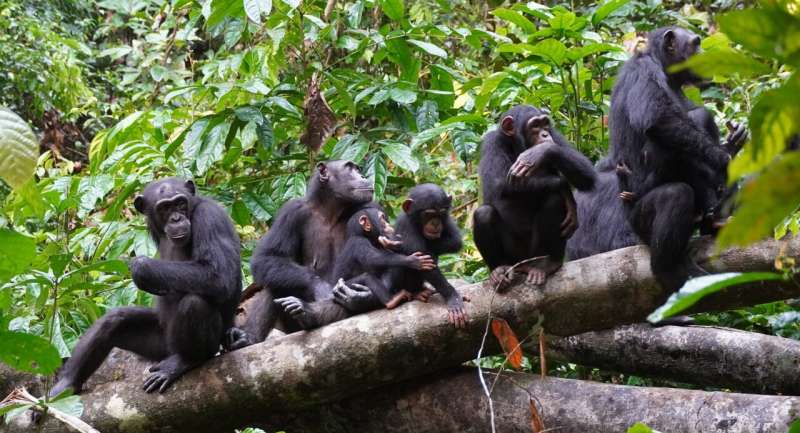
Chimpanzees use high ground to conduct reconnaissance on rival groups, often before making forays into enemy territory at times when there is reduced risk of confrontation, a new study suggests.
Tactical use of elevated terrain in warfare situations is considered unique to humans—until now. For the first time, one of the oldest military strategies has been observed in our closest evolutionary relatives.
Researchers conducted a three-year study of two neighboring chimpanzee groups in the West African forests of Côte d'Ivoire, tracking the primates as they traversed their respective territories, including an overlapping border area where skirmishes occasionally took place.
The team found that chimpanzees were more than twice as likely to climb hills when heading towards this contested frontier as when they were traveling into the heart of their own territory.
While atop border hills, chimpanzees were more likely to refrain from noisily eating or foraging and spend time quietly resting—enabling them to hear distant sounds of rival groups, say researchers.
The further away the location of hostile chimpanzees, the greater the likelihood of an advance into dangerous territory upon descending the hill. This suggests that chimpanzees on high ground gauge the distance of rivals, and act accordingly to make incursions while avoiding costly fights.
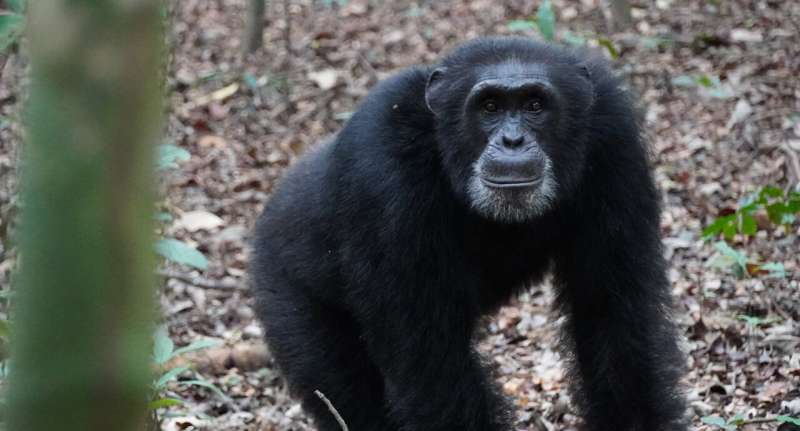
Other mammal species such as meerkats use high ground to keep watch for predators or call to mates. However, researchers say this is the first evidence for an animal other than humans making strategic use of elevation to assess the risks of "intergroup conflict".
"Tactical warfare is considered a driver of human evolution," said Dr. Sylvain Lemoine, a biological anthropologist from the University of Cambridge's Department of Archaeology, and lead author of the study published in the journal PLOS Biology.
"This chimpanzee behavior requires complex cognitive abilities that help to defend or expand their territories, and would be favored by natural selection."
"Exploiting the landscape for territorial control is deeply rooted in our evolutionary history. In this use of war-like strategy by chimpanzees we are perhaps seeing traces of the small scale proto-warfare that probably existed in prehistoric hunter-gatherer populations."
The study was conducted at the Taï Chimpanzee Project, where Lemoine worked during his Ph.D. The project is currently led by study senior author Dr. Roman Wittig from CNRS in France.
Teams of researchers spend 8-12 hours a day following four groups that are "habituated" to the presence of humans. It is one of the few sites where data is collected simultaneously on multiple communities of wild chimpanzees.
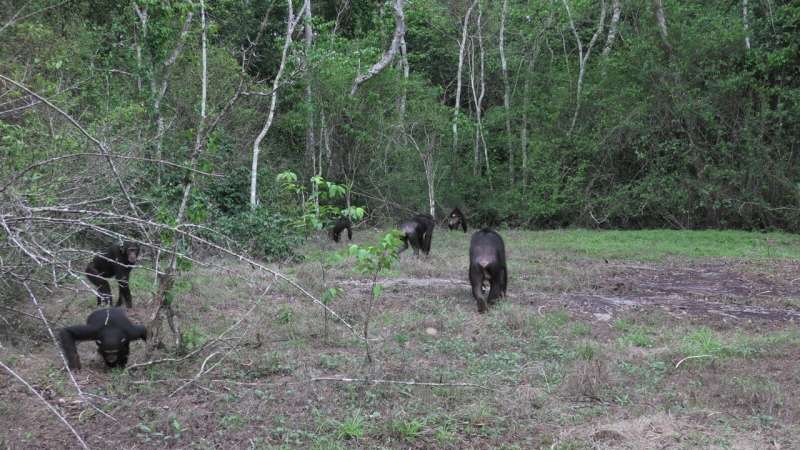
The project researchers have GPS trackers, through which the study authors were able to reproduce maps of two chimpanzee territories that border each other, including elevation data. These were matched to old French colonial maps to confirm topography.
Each group consisted of 30-40 adult chimpanzees at any one time. The study used over 21,000 hours of track logs from a total of 58 animals recorded between 2013 and 2016.
To establish and protect their territory, chimpanzees perform regular tours of the periphery that form a sort of "border patrol", says Lemoine. "Patrols are often conducted in subgroups that stay close and limit noise. As an observer, you get a sense that patrolling has begun. They move and stop at the same time, a bit like a hunt," he said.
The type of hills near the border used for reconnaissance are known as "inselbergs": isolated rocky outcrops that break up the forest canopy. Chimpanzees repeatedly returned to some of these inselbergs, where time on the summit was passed in a more muted state.
"These aren't so much lookout points as listen-out points," said Lemoine. "Chimpanzees drum on tree trunks and make excitable vocalizations called pant-hoots to communicate with group members or assert their territory. These sounds can be heard over a kilometer away, even in dense forest."
"It may be that chimpanzees climb hilltops near the edge of their territory when they have yet to hear signs of rival groups. Resting quietly on an elevated rock formation is an ideal condition for the auditory detection of distant adversaries."
-
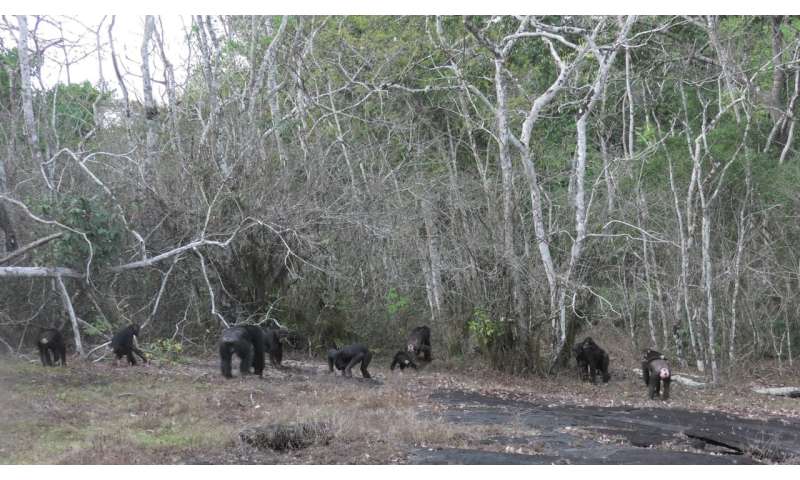
Chimpanzees leaving a hilltop after listening for signs of rivals. Credit: Oscar Nodé-Langlois/Tai Chimpanzee Project -
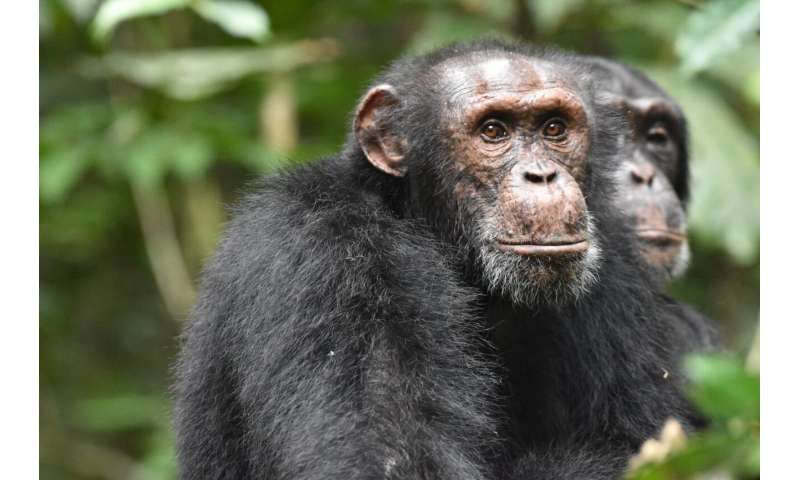
Tai male chimpanzee from one group attentively listening for signs of a rival group. Credit: Antoine Valé/Tai Chimpanzee Project
Researchers analyzed tactical movements in the half an hour after a stop longer than five minutes on a hill near the border, and compared it to movements after stops in low-lying border areas.
Following a hilltop recce, the likelihood of advancing into enemy territory increased from 40% when rivals were 500 meters away, to 50% when rivals were at 1000m, to 60% when rivals were at 3000m.
"Chimpanzees often expand their territory by encroaching and patrolling in that of their neighbors. Hilltop information-gathering will help them to do this while reducing risks of encountering any enemies," said Lemoine. "The border zone between the two groups was in a state of flux."
More territory can boost food provision and mating chances, says Lemoine. His previous work suggests that larger chimpanzee groups live in bigger territories with reduced pressure from rivals, which in turn increases birth rates within communities.
The latest research suggests that chimpanzees use hilltop reconnaissance to avoid confrontation, and violence is relatively rare, says Lemoine. But fights, and even kidnappings and killings, did occur between rival group members.
"Occasionally, raiding parties of two or three males venture deep into enemy territory, which can lead to fighting. Confrontations between rival chimpanzees are extremely noisy. The animals go into an intimidating frenzy, screaming and defecating and gripping each other's genitals."
More information: Sylvain Lemoine et al, Chimpanzees make tactical use of high elevation in territorial contexts, PLoS Biology (2023). DOI: 10.1371/journal.pbio.3002350. journals.plos.org/plosbiology/ … journal.pbio.3002350
Journal information: PLoS Biology
Provided by University of Cambridge



















